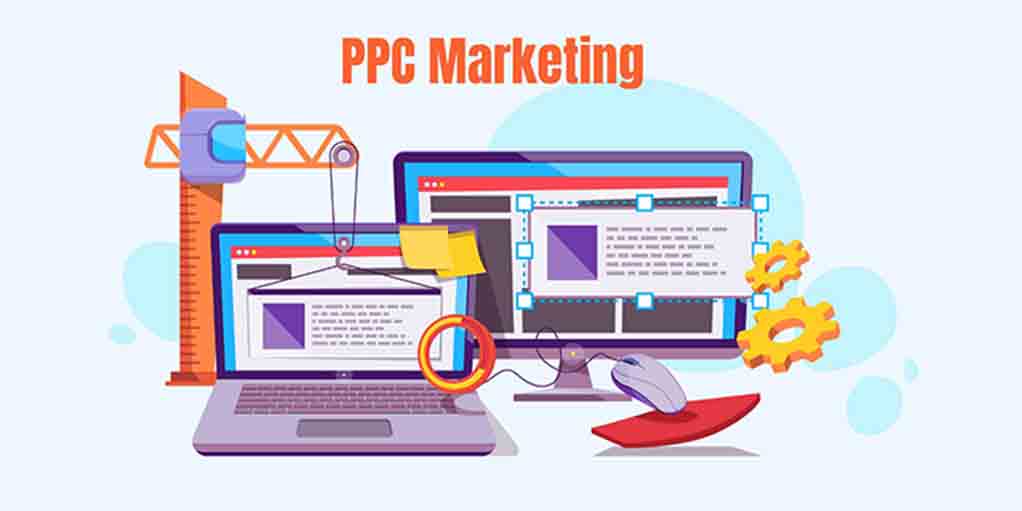Pay-per-click (PPC) advertising has become an essential tool in digital marketing, helping businesses reach a targeted audience, drive traffic, and boost conversions. PPC offers companies the opportunity to pay only when a user clicks on their ad, making it cost-effective and highly measurable.
This guide will walk you through the basics of PPC, explain its benefits, and provide strategies to create a successful PPC campaign.
What is Pay-Per-Click (PPC) Advertising?
PPC is an online advertising model where advertisers pay each time a user clicks on their ad. Commonly used platforms for PPC include Google Ads, Bing Ads, and social media sites like Facebook, Instagram, and LinkedIn. With PPC, advertisers bid on keywords related to their business, which triggers their ads to appear on search engines or social platforms when users search for those terms.
Types of PPC Ads:
- Search Ads: Appear on search engine results pages (SERPs) based on relevant keywords.
- Display Ads: Shown on websites and apps within Google’s Display Network, targeting users based on their interests.
- Social Media Ads: Advertisements on platforms like Facebook and Instagram that target specific audiences based on demographics, interests, and behaviours.
- Shopping Ads: Appear on Google Shopping and showcase individual products, which are ideal for e-commerce businesses.
Benefits of PPC Advertising
PPC offers several advantages for businesses, especially those looking to generate quick results:
- Immediate Visibility: PPC ads bring instant visibility by appearing at the top of search results, unlike SEO, which takes time to gain traction.
- Targeted Reach: PPC allows you to reach a specific audience by targeting keywords, locations, interests, and even devices.
- Budget Control: With PPC, you control the ad spend, setting a daily or monthly budget to keep costs manageable.
- Measurable ROI: PPC platforms provide detailed analytics, allowing you to track clicks, impressions, and conversions to assess campaign success.
- Boosted Brand Awareness: Even if users don’t click on your ad, PPC can improve brand visibility through impression counts.
Critical Components of a PPC Campaign
Before you begin, understanding the core elements of a PPC campaign is essential to maximize effectiveness.
- Keywords:
- Importance: Keywords determine when and where your ads appear. Choosing the right keywords is crucial for reaching your target audience.
- Types:
- Broad Match: Shows ads to users searching for variations of your keyword.
- Phrase Match: Shows ads for searches that include your keyword phrase.
- Exact Match: Shows ads only for searches that match your keyword exactly.
- Tip: Use keyword research tools like Google Keyword Planner to find relevant, high-volume keywords.
- Ad Copy:
- Importance: The ad copy should capture attention and prompt clicks. It’s the first interaction potential customers have with your brand, so make it compelling.
- Structure:
- Headline: Catchy and relevant to the search intent.
- Description: Provide clear value or benefit that answers the user’s need.
- Call-to-Action (CTA): Encourage the user to take a specific action, like “Learn More” or “Buy Now.”
- Tip: Test different versions of ad copy to find what resonates most with your audience.
- Landing Pages:
- Importance: A landing page is where users go after clicking on your ad. An optimized landing page can increase conversions by providing relevant information.
- Best Practices:
- Make sure the landing page matches the ad’s promise.
- Keep it simple, focused, and easy to navigate.
- Include a clear CTA, such as “Sign Up Now” or “Get a Free Quote.”
- Tip: Test landing page elements like headlines, images, and CTAs for the best results.
Step-by-Step Guide to Creating a PPC Campaign
- Define Your Goals
- Start by identifying what you want to achieve with your PPC campaign. Is it brand awareness, lead generation, sales, or app downloads? Clear goals will help shape your strategy and measure success.
- Choose the Right Platform
- Different platforms serve different purposes. For search visibility, Google Ads is ideal. For targeted demographic campaigns, consider social media ads on Facebook or Instagram.
- Conduct Keyword Research
- Use tools like Google Keyword Planner, Ahrefs, or SEMrush to find high-performing keywords related to your business. Aim for a mix of high-traffic, low-competition keywords for maximum ROI.
- Set Your Budget and Bidding Strategy
- Determine how much you’re willing to spend daily or monthly. Decide on a bidding strategy, such as:
- Cost Per Click (CPC): Pay only when a user clicks on the ad.
- Cost Per Thousand Impressions (CPM): Pay for every 1,000 impressions, regardless of clicks.
- Cost Per Acquisition (CPA): Pay only when a user completes a specific action, such as filling out a form.
- Create and Optimize Ad Copy
- Write clear, compelling ad copy with a strong CTA. Remember to focus on the user’s intent and what sets your offering apart from competitors.
- Design Landing Pages
- Create a landing page that delivers on the promise of the ad. Ensure that it’s visually appealing, easy to navigate, and has a strong CTA aligned with the ad.
- Launch Your Campaign
- Review your ads for accuracy, launch them, and monitor their performance over time. PPC platforms provide insights into metrics such as CTR, conversions, and ad position.
- Analyze and Optimize
- Regularly review your campaign’s performance. Test different keywords, ad copy, and landing page elements to identify what performs best. Adjust bids or budgets based on what drives the best results.
Common Mistakes to Avoid in PPC Advertising
- Ignoring Negative Keywords
- Negative keywords prevent your ad from showing up in irrelevant searches. Adding negative keywords reduces wasted clicks and ensures the right audience sees your ad.
- Skipping A/B Testing
- Without A/B testing, you won’t know which ad variations work best. Test different headlines, CTAs, and visuals to maximize engagement.
- Setting Unrealistic Budgets
- Underestimating your budget can limit your campaign’s effectiveness, while overspending can exhaust funds without apparent results. Start small, monitor results, and adjust accordingly.
- Neglecting Mobile Optimization
- Many users access ads via mobile, so ensure your landing pages and ads are mobile-friendly. This can significantly impact conversions and engagement.
Measuring the Success of Your PPC Campaign
Key performance indicators (KPIs) help measure the effectiveness of a PPC campaign:
- Click-Through Rate (CTR): The ratio of clicks to impressions, indicating ad relevance.
- Conversion Rate: The percentage of users who complete a desired action after clicking on the ad.
- Cost Per Conversion: The cost incurred to gain a single conversion, helping assess cost-effectiveness.
- Quality Score: Google’s rating of your ad relevance and landing page experience. A high-quality score can improve ad ranking and reduce costs.
- Return on Ad Spend (ROAS): Compares the revenue generated to the amount spent, indicating overall profitability.
Conclusion
PPC advertising is a powerful tool for driving targeted traffic, boosting visibility, and increasing conversions. By setting clear goals, conducting thorough keyword research, crafting compelling ad copy, and continuously optimizing, you can create an effective PPC strategy that aligns with your business objectives. Regular monitoring and tweaking ensure that you’re getting the most value out of your campaigns.
With the right approach, PPC can be an impactful component of your digital marketing strategy, delivering measurable results and helping you reach your marketing goals.
To learn more or to acquire our services, please contact us at https://paypercampaign.com





